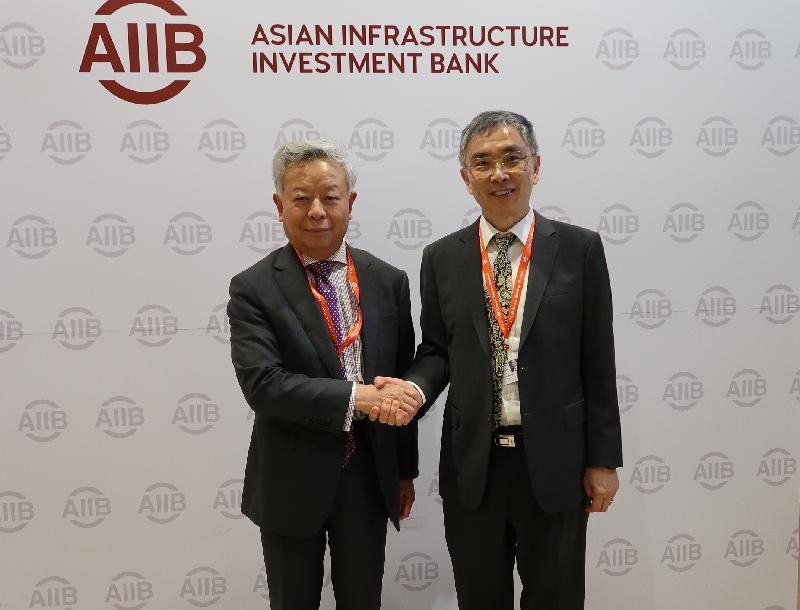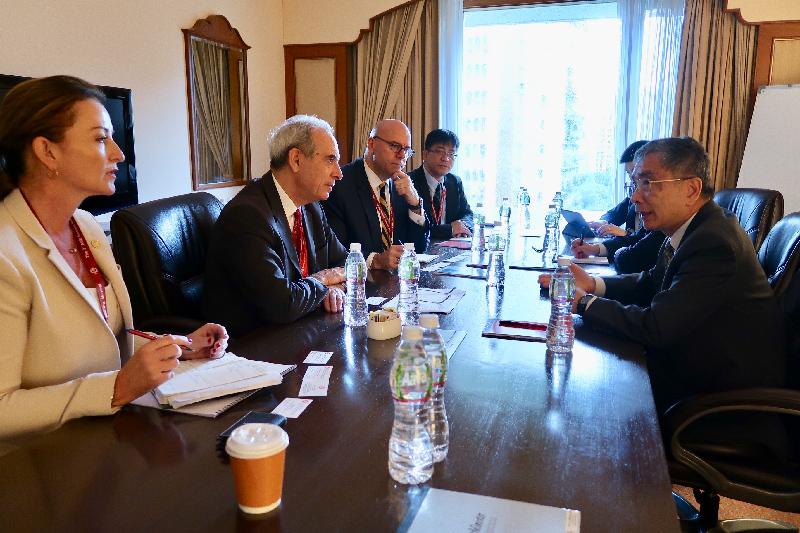The following is issued on behalf of the Legislative Council Secretariat:
The Legislative Council (LegCo) will hold a meeting on Wednesday (June 27) at 11am in the Chamber of the LegCo Complex. During the meeting, Members will consider a motion under the Legislative Council (Powers and Privileges) Ordinance.
The motion, to be moved by Dr Cheng Chung-tai, states: “That this Council appoints a select committee to inquire into the incident of the MTR Corporation Limited’s suspected concealment of the alleged substandard construction works carried out at the new platforms of Hung Hom station of the Shatin to Central Link, and other related matters, and that in the performance of its duties the committee be authorised under section 9(2) of the Legislative Council (Powers and Privileges) Ordinance (Cap. 382) to exercise the powers conferred by section 9(1) of that Ordinance.”
Meanwhile, Dr Kwok Ka-ki will move a motion on the Report of the Subcommittee on Issues Relating to Bazaars. The motion states: “That this Council notes the Report of the Subcommittee on Issues Relating to Bazaars.”
Ir Dr Lo Wai-kwok will move a motion on expediting the promotion of smart city development. The motion states: “That, since smart city is one of the four major areas of focused development of innovation and technology in Hong Kong, the Administration released the Smart City Blueprint for Hong Kong in December 2017, mapping out the policies and measures to be implemented in the next five years in six areas, namely smart mobility, smart living, smart environment, smart people, smart government and smart economy; in this connection, this Council urges the Government to proactively allocate resources to perfect various policies and ancillary measures, so as to expedite the promotion of smart city development; the relevant measures include facilitating the research and development and application of innovation and technology, upgrading the technological infrastructure of Hong Kong, promoting the intellectualisation of infrastructure and green architecture, facilitating the opening of data by public and private organisations for development and application, setting up a platform for sharing big data, making optimal use of innovation and technology for improvement of people’s daily living, as well as developing a low-carbon green and smart community, with a view to fostering the sustainable development of Hong Kong and facilitating the people in leading a quality life.”
Mr Christopher Cheung, Mr Tony Tse, Mr Alvin Yeung, Dr Elizabeth Quat, Mr Hui Chi-fung and Mr Charles Peter Mok will move separate amendments to Ir Dr Lo Wai-kwok’s motion.
On Government Bills, the Ferry Services (Amendment) Bill 2018 will be introduced into the Council for the First Reading and the Second Reading. The Second Reading debate on the Bill will be adjourned.
The Second Reading debate on the Road Traffic (Amendment) Bill 2018 and the United Nations Sanctions (Amendment) Bill 2018 will resume. If the Bills are supported by Members and receive their Second Reading, they will stand committed to the committee of the whole Council. After the committee of the whole Council has completed consideration of the Bills and their reports are adopted by the Council, the Bills will be set down for the Third Reading.
On Government motions, the Chief Secretary for Administration will move two proposed resolutions under the District Court Ordinance and the Small Claims Tribunal Ordinance respectively to amend the District Court Ordinance and the Small Claims Tribunal Ordinance as set out in Appendix 1 and Appendix 2.
The Secretary for Development will move a proposed resolution under the Construction Industry Council Ordinance to amend the Construction Industry Council Ordinance as set out in Appendix 3.
The Secretary for Labour and Welfare will move a proposed resolution under the Pneumoconiosis and Mesothelioma (Compensation) Ordinance to amend the Pneumoconiosis and Mesothelioma (Compensation) Ordinance as set out in Appendix 4.
During the meeting, the Chairman of the Panel on Public Service, Mr Poon Siu-ping, will present the “Report of the Panel on Public Service 2017-2018” and address the Council.
Members will also ask the Government 22 questions on various policy areas, six of which require oral replies.
The agenda of the above meeting can be obtained via the LegCo Website (www.legco.gov.hk). Please note that the agenda is subject to change, and the latest information about the agenda could be found on the LegCo Website.
Members of the public are welcome to observe the proceedings of the meeting from the public galleries of the Chamber of the LegCo Complex. They may reserve seats by calling 3919 3399 during office hours. Members of the public can also watch or listen to the meeting via the “Webcast” system on the LegCo Website. read more





